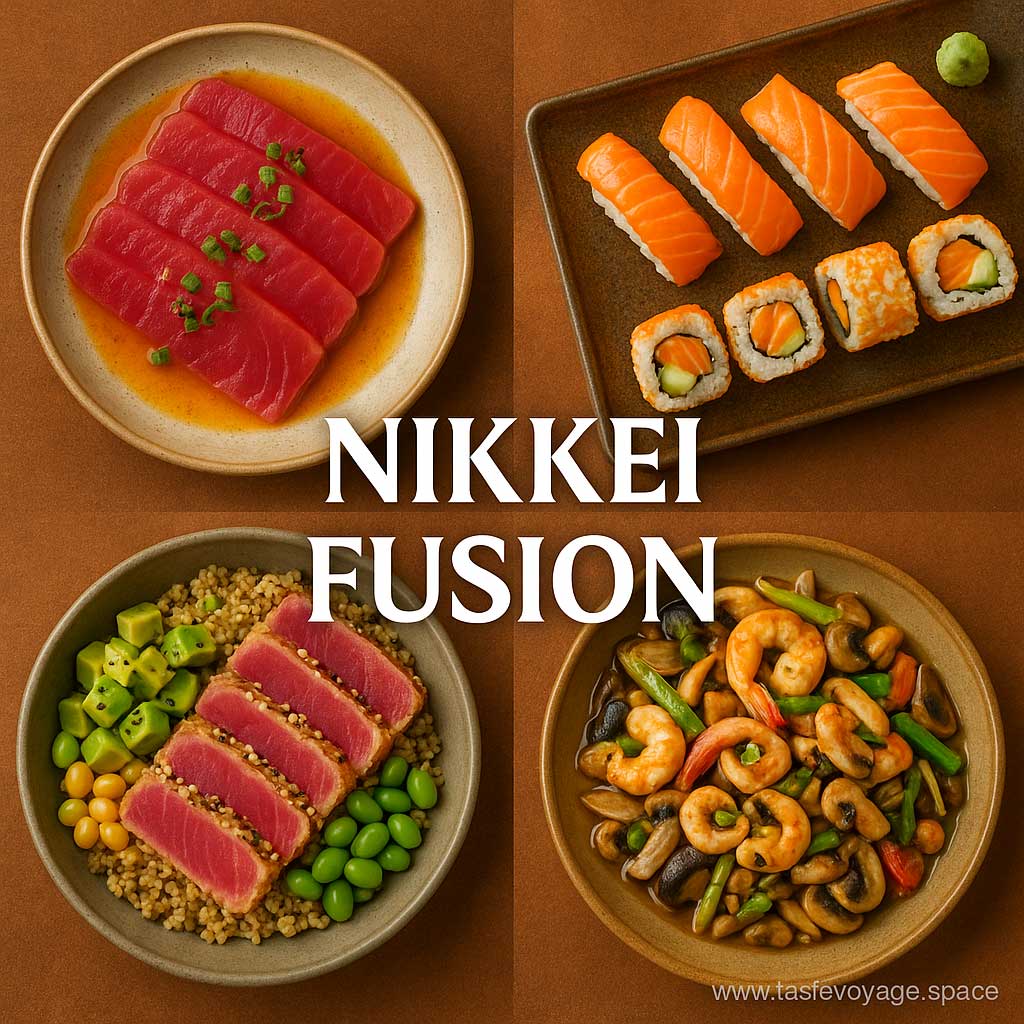Delicious Carpaccio Nikkei Recipe: A Fusion Delight
Travel the World Through Food >> Nikkei Fusion>>Peruvian cuisine>> Delicious Carpaccio Nikkei Recipe: A Fusion Delight
Delicious Carpaccio Nikkei Recipe: A Fusion Delight
Discovering Carpaccio Nikkei: A Fusion of Flavors and Cultures
The culinary world is rich with inventive dishes that celebrate the harmony of diverse traditions. One such remarkable creation is the Carpaccio Nikkei, a dish that beautifully blends Japanese delicacy with Peruvian culinary artistry. This innovative recipe exemplifies how food can serve as a bridge, bringing together distinct flavors and techniques to create something truly special.
Cultural Significance and Heritage
Carpaccio Nikkei stands as a testament to the vibrant exchange of culinary ideas across cultures. The term “Nikkei” refers to the Japanese influence in Latin American countries, especially Peru. Over decades, Japanese immigrants have integrated into Peruvian society, sharing their culinary traditions while embracing local ingredients. The result is a unique, flavorful fusion that highlights mutual respect and cultural appreciation.
This dish embodies the spirit of culinary adaptation and creativity. It takes the delicate, thinly sliced raw fish typical of Japanese cuisine and elevates it with Peruvian ingredients such as citrus, herbs, and spices. The dish’s very existence reflects a history of cultural exchange, showcasing how food can serve as a language of connection and understanding.
Culinary Significance and Unique Features
The elegance of Carpaccio Nikkei lies in its refinement and balance. The raw fish, often fresh and tender, is meticulously sliced to showcase its natural beauty. It is typically dressed with a vibrant citrus-based marinade, such as yuzu or lime, which adds brightness and zest. Complemented by spicy or tangy elements like rocoto peppers or aji amarillo, the dish offers a complex yet harmonious flavor profile.
In addition to its flavors, Carpaccio Nikkei emphasizes presentation. The thin slices of fish are artfully arranged to highlight their delicate texture, inviting diners to appreciate the visual appeal before tasting. This focus on aesthetics reflects the Japanese appreciation for food as a form of art, while the lively flavors mirror the Peruvian passion for bold, fresh tastes.
A Celebration of Innovation and Tradition
What makes Carpaccio Nikkei truly special is its embodiment of culinary innovation rooted in tradition. It captures the essence of Japanese precision and finesse while embracing the vibrant, lively spirit of Latin American cuisine. The dish encourages a sense of curiosity and openness, inviting food lovers to explore the seamless blend of two rich cultures.
Through its balanced flavors and elegant presentation, Carpaccio Nikkei invites diners to experience a moment of cultural harmony. It is more than just a dish; it is a celebration of culinary ingenuity and the enduring power of shared food traditions. Whether enjoyed as an appetizer or a main course, this dish offers a delightful journey into the beauty of fusion cuisine.
Embracing Culinary Diversity
In a world of diverse culinary landscapes, Carpaccio Nikkei stands out as a shining example of how tradition and innovation can come together. It challenges us to see beyond borders and appreciate the artistry of blending flavors and techniques. As a reflection of cultural exchange, it reminds us that food is a universal language—one that fosters appreciation, connection, and mutual respect.
Final Thoughts
The Carpaccio Nikkei Recipe is a treasure for food enthusiasts eager to explore the harmonious marriage of Japanese delicacy and Peruvian vibrancy. Its cultural value and culinary significance make it a standout dish in the realm of fusion cuisine. Whether you are a seasoned gastronome or a curious newcomer, experiencing this dish offers a delicious window into the creative spirit that drives culinary innovation around the world.
Indulge in the elegance of Carpaccio Nikkei and celebrate the beautiful tapestry of flavors it weaves together. It’s more than just a dish; it’s a story told through the art of cuisine.
